Abstract
A rapid procedure has been devised to extract photochemically active reaction centers from the green bacterium Chloroflexus aurantiacus strain J-10-f1 and a mutant lacking colored carotenoids (73-3). The isolated material was completely free of antenna bacteriochlorophyll and cytochromes and nearly free of carotenoids and had near IR absorption maxima at 865, 815, and 756 nm. On oxidation, the peak at 865 nm was bleached and the remaining two peaks were shifted to 806 and 757 nm. Although these spectral characteristics show general similarities to those in reaction center preparations from purple bacteria, there are some distinct differences. Comparison of the spectra of reaction centers of Chloroflexus and Rhodopseudomonas sphaeroides, adjusted to the same absorbance at 865 nm, showed that the absorbance at 815 nm in Chloroflexus was much less and that at 757 nm was much greater than the equivalent absorbances in R. sphaeroides. Unlike reaction centers from R. sphaeroides and other photosynthetic bacteria that have two molecules of bacteriopheophytin and four molecules of bacteriochlorophyll per unit, reaction centers from Chloroflexus appear to have three molecules of each pigment per unit. A prominent shoulder at 793 nm disappears concomitantly with the bleaching at 865 nm on oxidation of Chloroflexus reaction centers; this spectral component may represent the higher energy transition in the near IR of the two bacteriochlorophylls forming P865. While Chloroflexus has a light-harvesting pigment system very similar to that of the Chlorobiaceae, its reaction center has optical absorption characteristics similar to those of the Rhodospirillaceae.
Keywords: photosynthesis, bacteriochlorophyll, pigment protein, evolution
Full text
PDF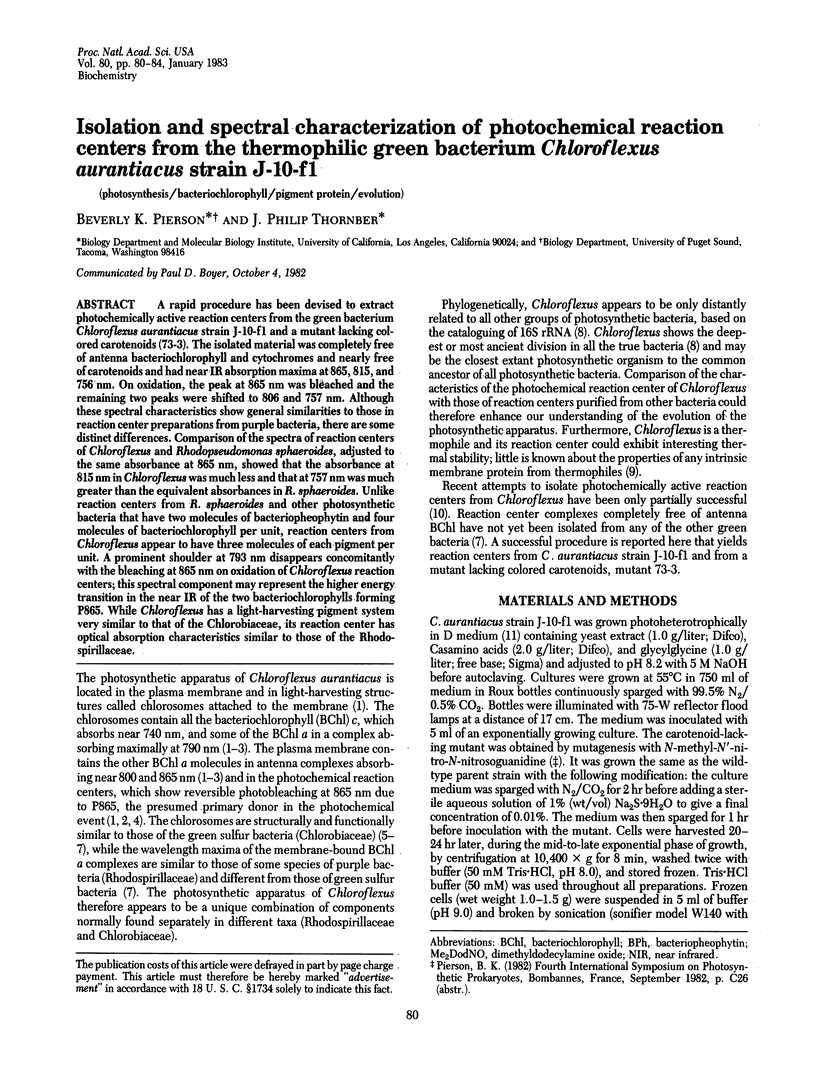
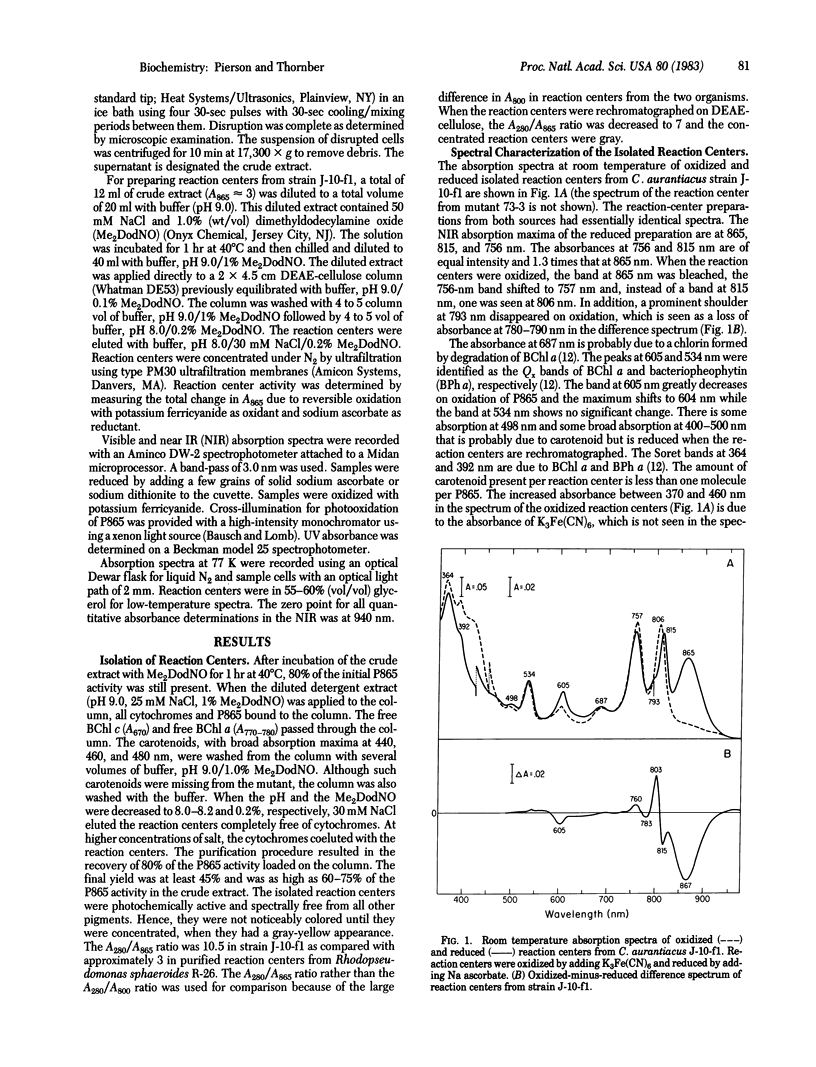
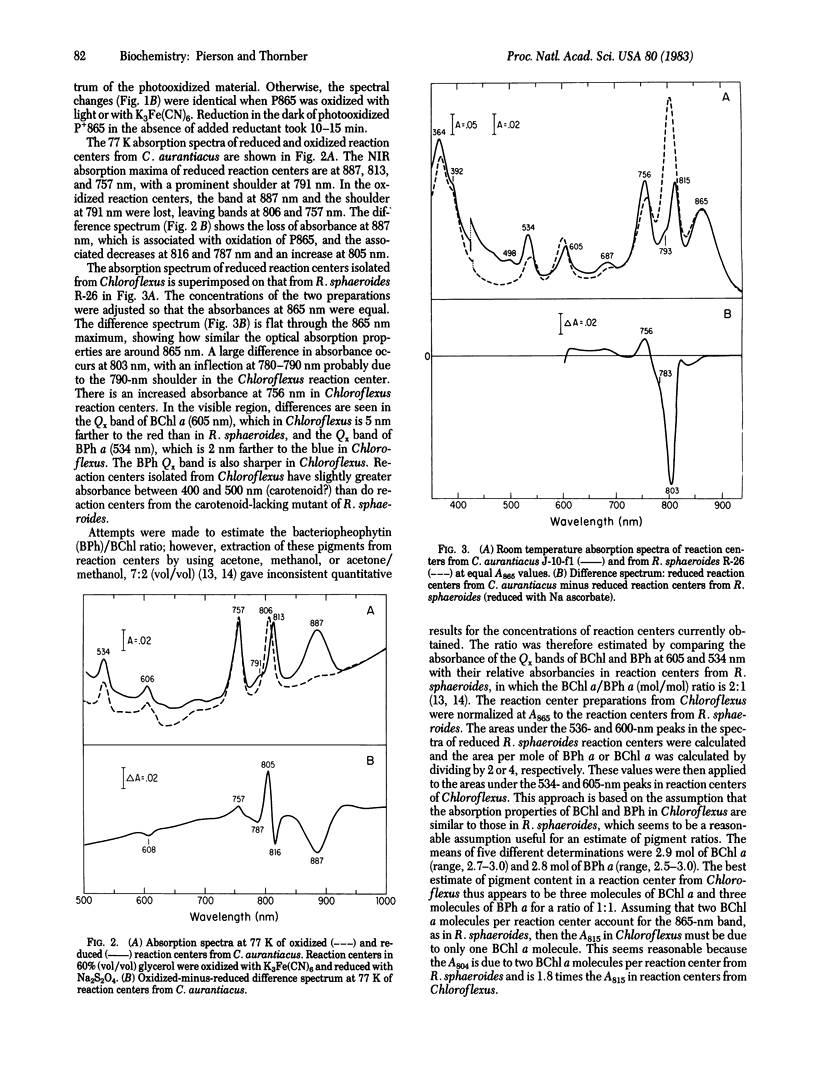
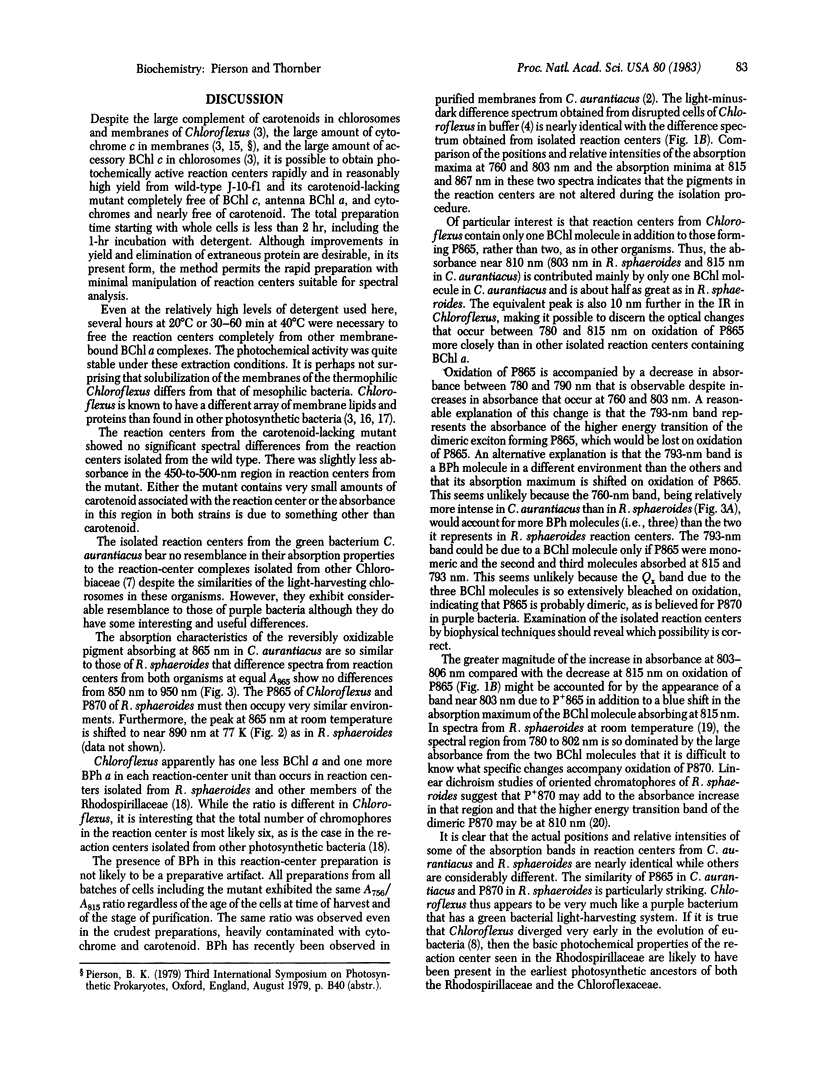
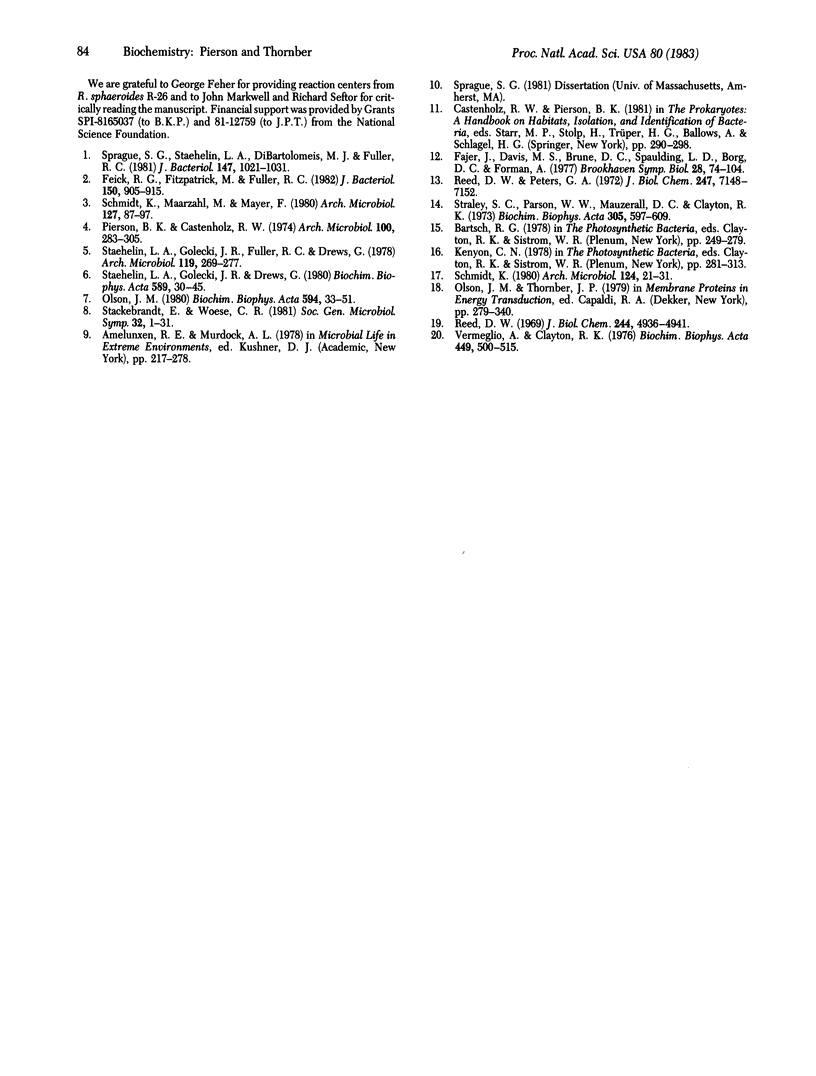
Selected References
These references are in PubMed. This may not be the complete list of references from this article.
- Fajer J., Davis M. S., Brune D. C., Spaulding L. D., Borg D. C., Forman A. Chlorophyll radicals and primary events. Brookhaven Symp Biol. 1976 Jun 7;(28):74–104. [PubMed] [Google Scholar]
- Feick R. G., Fitzpatrick M., Fuller R. C. Isolation and characterization of cytoplasmic membranes and chlorosomes from the green bacterium Chloroflexus aurantiacus. J Bacteriol. 1982 May;150(2):905–915. doi: 10.1128/jb.150.2.905-915.1982. [DOI] [PMC free article] [PubMed] [Google Scholar]
- Olson J. M. Chlorophyll organization in green photosynthetic bacteria. Biochim Biophys Acta. 1980 Dec 22;594(1):33–51. doi: 10.1016/0304-4173(80)90012-9. [DOI] [PubMed] [Google Scholar]
- Reed D. W. Isolation and composition of a photosynthetic reaction center complex from Rhodopseudomonas spheroides. J Biol Chem. 1969 Sep 25;244(18):4936–4941. [PubMed] [Google Scholar]
- Reed D. W., Peters G. A. Characterization of the pigments in reaction center preparations from Rhodopseudomonas spheroides. J Biol Chem. 1972 Nov 25;247(22):7148–7152. [PubMed] [Google Scholar]
- Sprague S. G., Staehelin L. A., DiBartolomeis M. J., Fuller R. C. Isolation and development of chlorosomes in the green bacterium Chloroflexus aurantiacus. J Bacteriol. 1981 Sep;147(3):1021–1031. doi: 10.1128/jb.147.3.1021-1031.1981. [DOI] [PMC free article] [PubMed] [Google Scholar]
- Staehelin L. A., Golecki J. R., Drews G. Supramolecular organization of chlorosomes (chlorobium vesicles) and of their membrane attachment sites in Chlorobium limicola. Biochim Biophys Acta. 1980 Jan 4;589(1):30–45. doi: 10.1016/0005-2728(80)90130-9. [DOI] [PubMed] [Google Scholar]
- Straley S. C., Parson W. W., Mauzerall D. C., Clayton R. K. Pigment content and molar extinction coefficients of photochemical reaction centers from Rhodopseudomonas spheroides. Biochim Biophys Acta. 1973 Jun 28;305(3):597–609. doi: 10.1016/0005-2728(73)90079-0. [DOI] [PubMed] [Google Scholar]
- Vermeglio A., Clayton R. K. Orientation of chromophores in reaction centers of Rhodopseudomonas sphaeroides. Evidence for two absorption bands of the dimeric primary electron donor. Biochim Biophys Acta. 1976 Dec 6;449(3):500–515. doi: 10.1016/0005-2728(76)90159-6. [DOI] [PubMed] [Google Scholar]


